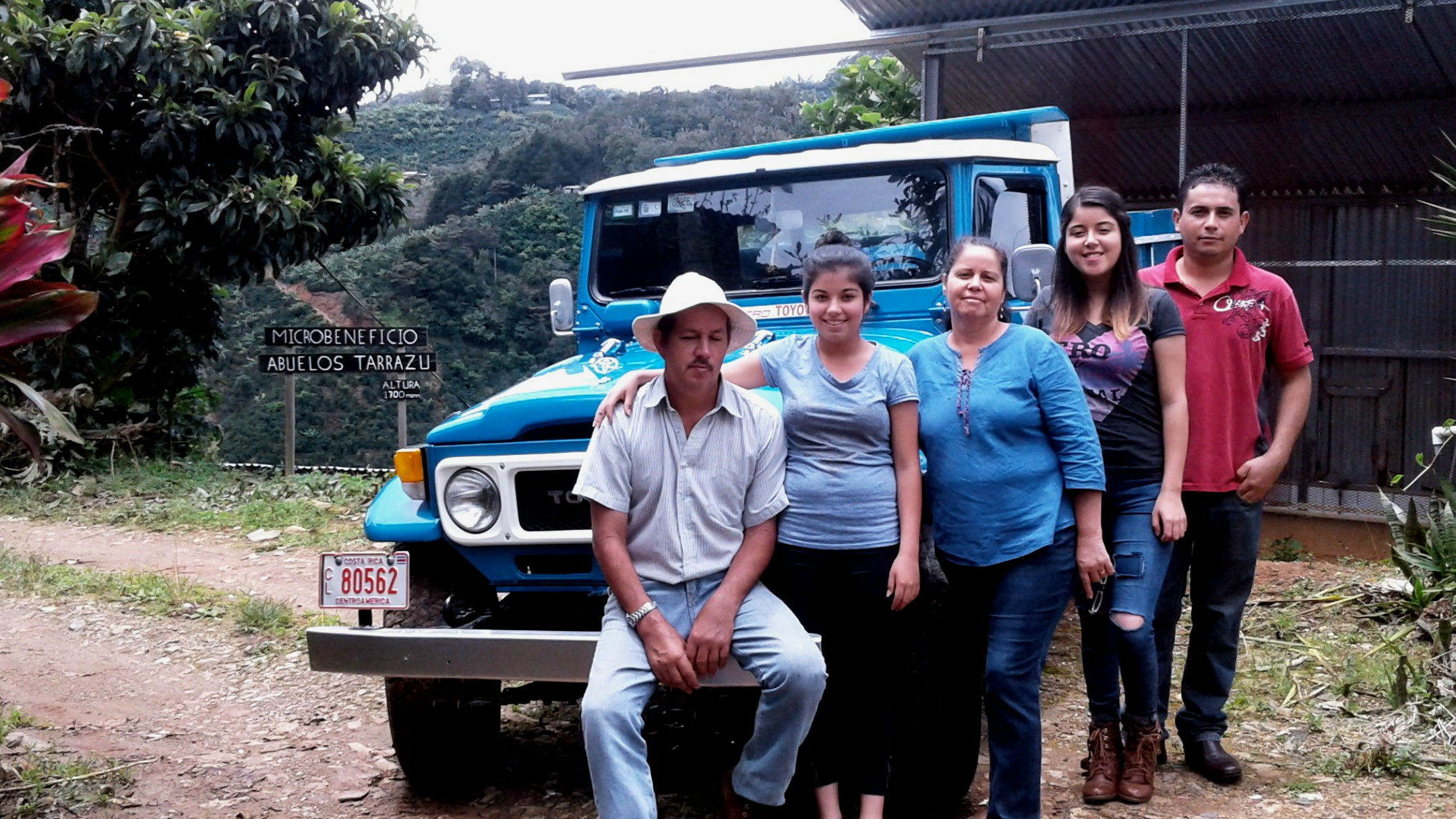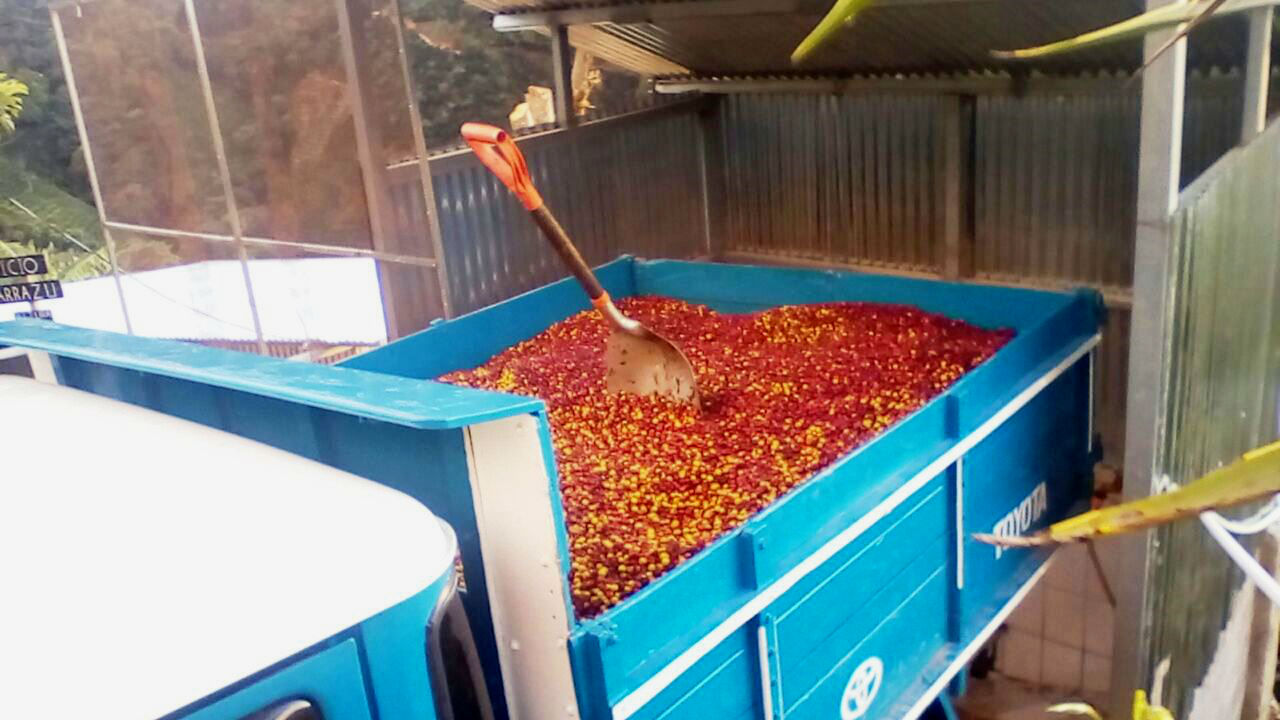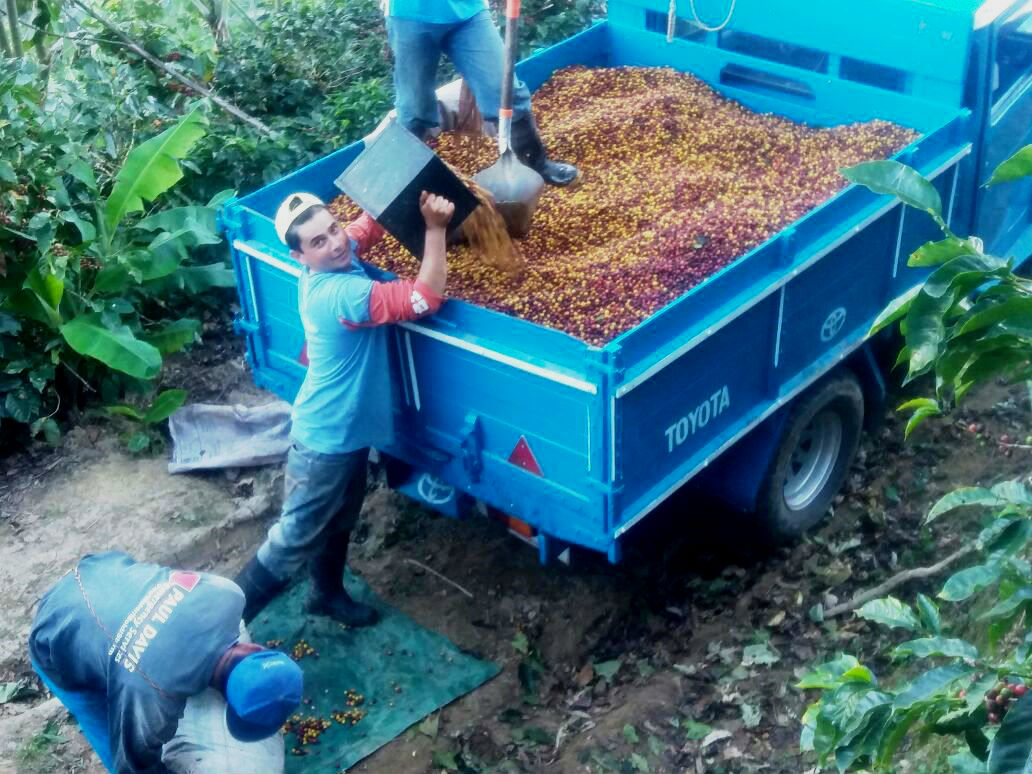Costa Rica La Esperanza de Tarrazu Familia Monge Black Honey Crown Jewel
Boxes 0
Warehouses Oakland
Out of stock
Intro
This unique, bold offering is sourced from Gustavo, Rodolfo, and the rest of the Monge family in Central Costa Rica. We picked up a ton of exciting, vibrant flavors in the cup, including blackberry compote, plum jam, and a complementary herbal piney note. It’s a zesty, riveting coffee ready for adventurous cuppers and roasters alike.
The Monge family have been growing coffee for 40 years in La Esperanza de Tarrazu, and are deeply invested in their community. They collaborate with the local development association to coordinate school and church functions, and donate coffee to charity annually.
The farm is just 5 hectares, yet the Monge family have diversified their crops including lemon, orange, mango, guava, plantain, and banana. This particular harvest is processed as a “Black Honey.” Honey processing is a form of semi-washing wherein the cherry skin and most of the fruit are stripped away and the remaining sticky mucilage is left to dry on the pergamino. Skipping the washing and controlled fermentation stages tends to increase fruity flavors in the coffee, and has the added benefit of saving water and time. “Black” honeys tend to have the maximum amount of fruit left on the seed after pulping, though each producer’s definition of their honey color can differ slightly.
Green
A unique coffee in many regards, including its incredibly high density, this Black Honey is of relatively large screen size and maintains a very slightly above average moisture content and water activity. It appears, as do many honey process coffees, a little foxy as green, and you should expect a bit of dark colored chaff during roasting.
The lot is comprised of Caturra and Catuaí, classic Central American varieties (though both originally hail from Brazil). Caturra is a spontaneous mutation of heirloom Bourbon, first observed in 1937, and Catuaí was developed about a decade later (though not formally released until the 1970’s) by hybridizing Yellow Caturra with Mundo Novo. The short stature of these two cultivars makes them resistant to wind, and easier to plant densely and harvest, though they are susceptible to rust and other common coffee afflictions.
Taste
Ikawa
Over the last several months I have started to rely on a few sample roast profiles more and more. One of these I call 5:15 408 \m/fc. I used to have a different name, but now that I have tallied close to 50 Ikawa profiles, it was time to sit down and develop a naming convention before I get lost in the woods. The first number refers to the total duration of the roast, the second number is the final end temperature in degrees Fahrenheit, and the last part is code for my fan speed profile. The code is simple; a forward slash ( / ) is an increase in fan speed and a backslash ( \ ) symbolizes a decrease in speed. Other notes, such as, m is for Maillard or yellowing, and fc is used for first crack.
In the picture below you can see three different coffees roasted with the same Ikawa profile and the differences in not only the amount of chaff expelled, but the color of the chaff as well. CJ1204, The red honey process from Costa Rica Coopedota, had very little chaff that was the palest of the three coffees sampled. It was even more pale than the washed coffee from Guatemala, CJ1206, which was unexpected. The black honey from Tarrazu, CJ1205, has the darkest color chaff, most likely from the large amount of mucilage left on the coffee during the drying process at the wet mill.
On the cupping table, this coffee was extremely syrupy and floral, but a little too close to the malty side denoting a slight underdevelopment. I will need to find a way to increase the development to rid the flavor profile of the malty flavors without losing the delicate florals and bright acidity.
Roast
I really love this coffee for its juicy and syrupy structure combined with bright citrus and florals. It is very dense with a high a relatively high moisture content and water activity. First crack did not start as late as I imagined that it would. Instead, this coffee began to crack ever so softly at 395°F, which is pretty average on the Probatino. The two roast profiles below are extremely similar and were actually quite similar on the cupping table as well. The only difference is the reduction of heat at first crack by a ¼ gas in Probatino Roast (1) and the reduction of heat 43 seconds after first crack by ½ gas in Probatino Roast (2).
On the cupping table, Probatino Roast (1) was just slightly brighter and more floral in comparison with the gentler heat approach through post crack development. While Probatino Roast (2) was more dense and plummy.
Behmor
Unless otherwise noted, I follow a set standard of operations for all my Behmor roasts. Generally, I’ll use the 1lb setting, manual mode (P5), full power, and high drum speed until crack. Read my original post and stats here.
The Costa Rica Black Honey was a unique coffee to taste and to roast. Part of this was that I decided to try something different from my usual routine. Instead of adjusting heat immediately after first crack, I allowed the roast to continue at full heat after first crack. The result was not a remarkably shorter roast, as one might expect, but rather a wider variation of internal and external development. ColorTrack numbers for whole bean and ground were much further apart than normal. Turns out there’s a reason to slow down the roast! Patience is necessary to achieve a more even roast.
On the cupping table, this coffee was divisive. I rather enjoyed this cup, with its dried fruit and brown sugar notes. Other folks found it on the dry side, and wanted to have a bit more juicy fruit present in the cup. Apricot and kiwi made appearances in the tasting notes.
If I were to suggest a method for roasting this coffee, it would be to slow down a bit and enjoy the process. My own roast was a bit rushed, and this coffee may prefer a bit more time to get to the level of juiciness that some palate prefer. Take your time with this enjoyable coffee!
Brew
The complexity of this coffee is pretty astounding. I chose to use Jen’s first roast for my brew analysis; on the cupping table it had offered some lovely notes of caramelized sugar as well as pronounced blackberry and jasmine. I used a V60 in order to get a clean cup of everything this coffee has to offer, and it seemed to work. My first brew was full of juicy peach, balsamic glazed strawberries, sugarcane, and dried fig. I used a 1:16 ratio with grind size 8 on the EK43, stirring my 40 grams of bloom water within the first 10 seconds of pouring to make sure all the grounds were saturated.
Obviously, this cup was delicious, but I wondered what pulling back on extraction might do, so I dialled my EK up to 8.5 and tried the same recipe again. This time I found a lot of the same raspberry, tangerine, and sparkling lemon lime acidity from the first cup, but there was also a lovely hint of elderflower and chamomile that really added something to the balance of the brew. This version also added layers of vanilla and a very creamy body to the mix. The Monge family really outdid themselves with this coffee.





